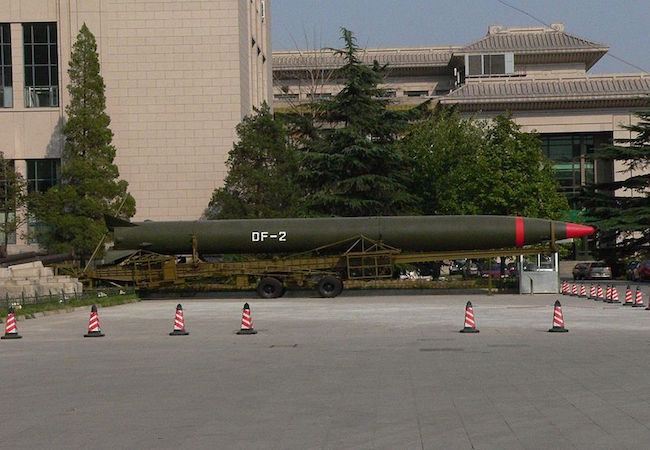
By Maimuna Ashraf
Indeed, India and Pakistan are intertwined in an absolute longstanding security competition. Although, nuclear parity does not exist in the region neither both states are conventionally parallel but action-reaction or tit-for-tat cycle is rapidly enhancing the nuclear capabilities in Southern region, specifically of India and partially of Pakistan. India shares a mutual distrust with both China and Pakistan while Pakistan’s nuclear policies are specifically India centric.
Nevertheless India’s conventional superiority and nuclear advancements strongly influence Pakistan’s threat perceptions and nuclear strategies, resultantly boosting the region’s nuclear developments. The two most recent developments in South Asia have critically hoisted the danger of an accelerated nuclear arms race between India and Pakistan. First, the predominant development in region is the production, induction and deployment of Ballistic Missile Defense (BMD); Second, the developments related to sea-based nuclear warheads, that are shaping naval nuclear regime in South Asian region.
Currently, both Pakistan and India have enough nuclear capable bombers, warheads and ballistic and cruise missile. Notwithstanding these aspects, the robust modernization and enlargement of India’s military arsenals has significantly increased the size of its conventional and nuclear weapons. A while back, India announced the deployment of an advanced ballistic missile shield to protect cities such as Delhi and Mumbai, against incoming enemy ballistic missiles. The test for this purpose will be conducted using a Prithvi missile and the purpose of anti-ballistic missile would be to intercept and destroy any incoming ballistic missile. Evidently, the deployment of BMD will receive strong Indian support for the sense of security proposed by the system but it also holds elements that will destabilize the regional security paradigm and deterrence posture. India’s pursuit of BMD will undermine the prevailing paradigm of mutually assured destruction or strategic equilibrium because the BMD shield system will make India believe that it can launch a nuclear strike while successfully defend itself against any retaliation.
Apparently and theoretically, Indian acquisition of BMD is a defensive weapon to stave off the Pakistan’s ballistic missile but practically it will pessimistically affect Pakistan’s deterrence strategy. Consequently, the nuclear arms race in South Asia would be intensified for two prominent reasons; first, it would force Pakistan to build larger number of nuclear weapons that can be fired on defended cities to overwhelm shield system defense and make it difficult to detect multiple missiles at once. Evidently, it will become requisite for Pakistan to seek strategic partners who could provide the capability to counter BMD. Second, asymmetry will pressurize Pakistan to develop an assortment of nuclear missiles and delivery systems in view of amid reality that deployment of BMD would assist Indian ambitions to launch a conventional military operation such as through cold start.
Conversely, the evolving naval nuclear dynamics in South Asia would start a new competition in the region with alarming future prospects. Both states are said to be developing their naval nuclear forces. India, the world’s largest weapon importer, has recently approved $16 billion for nuclear powered submarines and naval warships. Reportedly, India plans for developing more than 160 ship navy, 3 aircraft carriers and more than 40 warships and submarines that includes anti-submarines corvettes and stealth destroyers. India is one of the three Asian countries to maintain aircraft carriers. On other hand Pakistan has lately approved a proposal to purchase eight diesel-electric submarines. However viewing India’s naval ambitions, Pakistan will look to neutralize developments with India and it may prove an initiative for having permanent sea-based deterrent equipped with submarine launched variant of cruise missile.
Recently, a report “Murky Waters: Naval Nuclear Dynamics in the Indian Ocean” by Iskander Rehman highlighted few interesting and important points. It discusses in detail that the pursuit of sea-based nuclear strike force is the next step towards India’s quest for an assured retaliatory capability and Pakistan’s naval nuclear ambitions are fueled primarily with growing conventional asymmetry rather than strategic imbalance between both countries. Nonetheless, an imperative issue is missing in debate that what a new command and control model will be adopted by Indian strategic forces and what challenges it would pose to the security of region.
These two recent developments in South Asia affect three foremost components of strategic stability that includes deterrence stability, arms-race stability and crisis stability. The recent trends show that India is shaping the regional security domains and Pakistan is bound to be shaped- a practice beyond the practices to regional stability.




